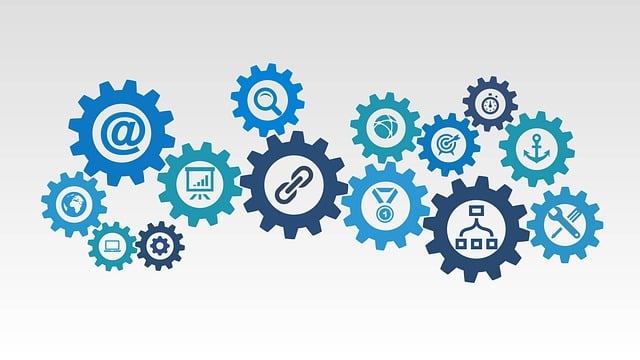AI automation is transforming mobile home living, offering sustainable and smart solutions through advanced lighting systems. These AI-powered models optimize energy efficiency by adjusting light intensity and color temperature based on real-time factors like time of day, weather, and occupancy. They learn occupant habits to personalize illumination, enhancing comfort and well-being. Integrating these systems with other smart home devices enables comprehensive energy management, making AI sustainability models a promising step toward efficient, green housing. This guide provides a strategic process for homebuilders to implement these innovations, focusing on model selection, seamless integration, data training, automatic lighting adjustments, and thorough testing for optimal performance.
“Discover the future of home automation with AI-powered lighting in mobile homes. This revolutionary technology promises to enhance living standards and promote sustainability in prefab housing.
The article explores how artificial intelligence can adjust lighting automatically, optimizing energy efficiency and user comfort. We’ll delve into its advantages, from reduced energy consumption to its role in creating healthier living environments.
Furthermore, a practical guide will equip homebuilders with the knowledge to integrate AI lighting models, offering a step-by-step approach to harnessing this innovative technology.”
- Understanding AI Automation in Mobile Homes: How It Works
- Benefits of AI-Powered Lighting for Prefab Housing and Sustainability
- Integrating AI Lighting Models: A Step-by-Step Guide for Homebuilders
Understanding AI Automation in Mobile Homes: How It Works

In today’s digital era, the integration of Artificial Intelligence (AI) into everyday life continues to revolutionize various sectors, and mobile homes are no exception. AI automation in prefab housing offers a promising solution for enhancing energy efficiency and creating smarter living environments. By leveraging AI sustainability models, these systems can learn and adapt to the habits of their occupants, optimizing lighting adjustments accordingly.
The process typically involves advanced algorithms that analyze patterns in usage data, such as time spent in different rooms, preferred lighting levels, and even natural light availability. Armed with this knowledge, the AI system automatically adjusts lighting fixtures throughout the mobile home, ensuring optimal illumination while minimizing energy waste. This not only contributes to environmental sustainability but also enhances comfort and convenience for residents, making prefab housing a more appealing and technologically advanced option.
Benefits of AI-Powered Lighting for Prefab Housing and Sustainability

AI-powered lighting systems are transforming prefab housing, offering a host of benefits that align perfectly with sustainability goals. These smart models can automatically adjust light intensity and color temperature based on real-time data, such as time of day, weather conditions, and occupancy. This not only enhances energy efficiency by minimizing unnecessary electricity usage but also creates a more comfortable living environment. By learning occupants’ habits and preferences, AI lighting systems can personalize illumination, contributing to improved user satisfaction and well-being.
Moreover, integrating AI into prefab housing enables seamless integration with other smart home devices, creating a cohesive and interconnected living space. This interconnectivity allows for comprehensive energy management, where lighting adjustments are coordinated with HVAC systems and other appliances to optimize overall resource consumption. As the demand for sustainable and efficient housing grows, AI sustainability models for prefab housing represent a promising step towards a greener future.
Integrating AI Lighting Models: A Step-by-Step Guide for Homebuilders

Integrating AI-driven lighting models into prefab housing is a strategic move towards sustainable and efficient living spaces. Here’s a step-by-step guide for homebuilders to implement this innovative feature:
1. Select Appropriate AI Lighting Models: Start by choosing AI sustainability models tailored for prefab housing. These models should be able to learn and adapt lighting patterns based on occupancy, time of day, and ambient light conditions. Several open-source options and dedicated AI platforms offer pre-trained models suitable for residential applications.
2. Integrate with Smart Home Systems: Ensure seamless communication between the AI model and your smart home system. This involves setting up a central control unit that can interface with both the lighting system and the AI. Compatibility with popular smart home protocols like Zigbee, Z-Wave, or Wi-Fi will simplify the integration process.
3. Data Collection and Training: Before deployment, feed relevant data into the AI model to enhance its accuracy. This includes information on typical occupancy patterns, preferred lighting scenarios (e.g., reading vs. relaxing), and local climate conditions affecting natural light availability. Continuous learning through user feedback further improves the model’s performance.
4. Implement Automatic Adjustments: Configure the system to automatically adjust lighting based on AI-driven insights. For instance, the lights can dim during unoccupied periods, switch off when daylight is sufficient, or adapt brightness and color temperature according to time of day and individual preferences.
5. Test and Optimize: Conduct thorough testing in various scenarios to ensure optimal performance. This involves simulating different occupancy levels, weather conditions, and user interactions. Adjust the AI model’s parameters as needed to achieve the best lighting outcomes while conserving energy.
AI automation in mobile homes, particularly through AI-powered lighting systems, represents a significant step towards sustainable and efficient living. By leveraging advanced algorithms and machine learning, these models offer numerous benefits to prefab housing, including energy conservation, enhanced user experience, and reduced environmental impact. With proper integration, as outlined in this guide, homebuilders can unlock the full potential of AI sustainability models for prefab housing, paving the way for a future where smart homes are not just convenient but also eco-friendly.
